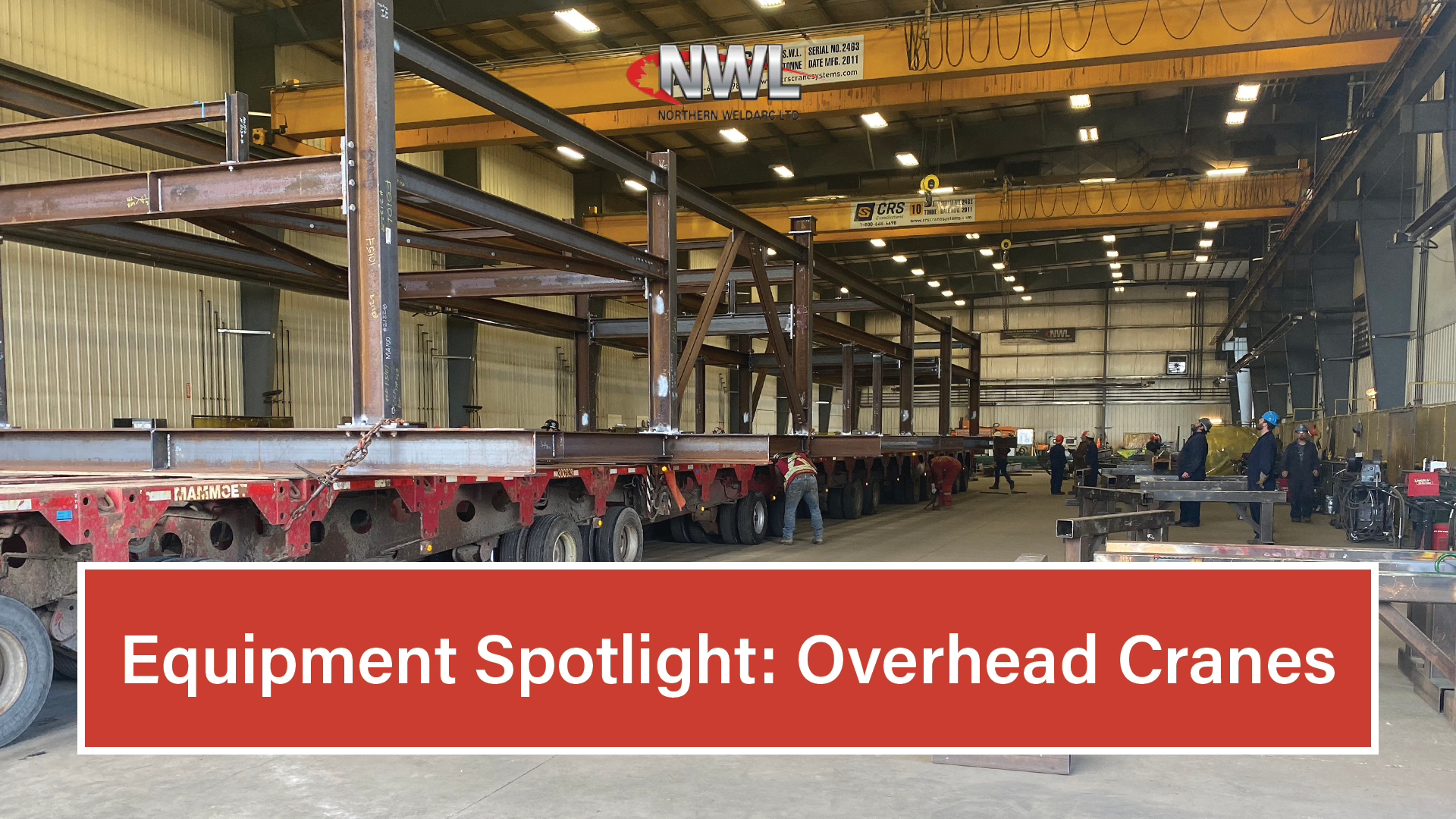We use both indoor and outdoor overhead cranes continually in our facility. Overhead cranes are extremely important to perform the lifting tasks that need to be completed. There are different hazards for the various size and shapes of beams as well as other steel components that are moved throughout our facility. All of our workers require overhead crane and rigging training and must pass a competency test. Our cranes are the most used tool in our shops and yard, and we must ensure that the workers are trained to use it properly.
We follow the legislative requirements of the Alberta Occupational Health and Safety Act, Regulation and Code along with the relevant standards set out by the Canadian Standards Association (CSA) and the American Society of Mechanical Engineers (ASME), while also referring to the American National Standards Institute (ANSI), Canadian Electrical Code and the Crane Manufacturers Association of America (CMAA) and the manufacturer specifications.
We use our cranes for moving steel from the moment that the material arrives on site to be unloaded from flatbed trucks into the appropriate location and area. From these designated areas, it is first moved to our CNC machines for cutting, punching and or drilling. The next work area is where the steel is fitted by structural steel plate fitters and then it is welded to complete the job and to be inspected by qualified inspectors to ensure no defects or errors are present. Its final destination at our shops is to be loaded on to flat deck trailers for transportation. We are always careful to ensure that each flat deck does not get overloaded.

Our Crane Operators must be efficient in moving the material to different areas of the facility as well as ensure that the safety of our workers and our production of materials is not compromised.
Each morning designated staff does a morning inspection of each of our cranes, looking and listening for any issues or potential issues. Annual inspections are completed as well as regular maintenance to ensure that they are in top performance. They are a key component of the work that we perform here.
Our Crane Operators need to look after the safety of themselves and others, as well as understand the operation that is required, be aware of any hazards, ensure no one gets under the load and is always aware of others within the area. Crane Operators must concentrate on what they are doing, look for limiting factors that may hinder the move, and at all times maintain the control of the load. The weight of the load that they are moving needs to be known so that the integrity of both the load and the equipment is maintained. When a crane is overloaded, it is put under excessive stress that can cause damage to the equipment which can result in the collapse of a crane.

Before moving a load, our workers must have the required training and experience. Therefore, they must know the following prior to the load being moved:
• The crane has visually been inspected and the daily inspection has been completed, reported, and signed off.
• The crane is suitable to lift and travel the load.
• The placement site is planned and laid out prior to the load being move.
• Prior to the move the Crane Operator ensures that all loose materials, parts, blocking, and packing have been removed. They then remove any slack from the sling and hoisting before lifting, making sure the lifting device sits in the saddle of the hook, and finally verifies that it is a Safe Working Load.
The Crane Operator proceeds to move the load safely by moving crane controls smoothly – avoiding abrupt, jerky movements of the load; they follow signals only from one slinger in charge of the lift, except in the case of a stop signal - from anyone then the load is stopped immediately.
• Everyone confirms the signals being used prior to a load being moved.
• They ensure all slings, hooks, hardware, etc. are appropriate for the load being lifted and are in good working order as well as all angles for the slings are appropriate; ensuring that nothing could link or catch on the load while raising it or travelling; as well as ensuring that nothing obstructs the movement of the load.
• They lift the load a small amount to verify that the braking system is functioning properly before proceeding with the lift.
• The Crane Operator keeps the load under control when lowering it – if the braking system stops working, the load can usually be lowered by reversing the hoist controller to the first or second point.
• They set the load on blocking (dunnage), but not the sling itself; and ensures that the load is not lower then below a level that corresponds to less than two full wraps of wire rope left on the drum. Communication and alertness while being aware of our surroundings and watching the load always is key to a safe movement of materials when using overhead cranes. If in doubt of the weight of the load, the Supervisor or Production Manager will be able to confirm from drawings the determined weight at that stage.
Each piece of steel components is riveted with a NWL Tag on it that states information such as job number and location prior to being loaded onto the trailer. The final stage is the shipping bill that has all prudent information, such as where load is being shipped, the number of pieces and weight is given to the truck driver so it can be delivered to our clients.


